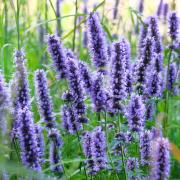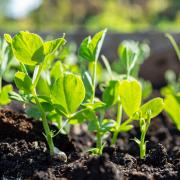Bringing a bit of nature and greenery into your life can benefit both your mental and physical wellbeing, so it’s little wonder houseplants became popular during lockdown. But according to new figures, the trend is still going strong.
Tesco has reported that demand for houseplants has soared by more than 130% since 2019, with what started as a lockdown trend gathering pace.
As the mental health charity Mind points out, being around nature, however possible, can benefit mood and reduce feelings of stress and anger. With more people working from home now too (Government figures from last year show 44% of workers reported home or hybrid working), not only are houseplants a cheap and easy way to spruce up your space, there’s the added bonus of calming properties!
Tesco suggests people sharing photos of their living space on social media could be one of the reasons demand for houseplants has soared. The brand’s plants buyer Vicki I’Anson said: “We first noticed the trend during the early months of lockdown, as a direct result of people having to stay at home and not being able to visit parks and other open spaces.
“But the trend caught on very quickly, with people keen to show off on social media how they were adorning their homes with houseplants, and it’s now even more pronounced than it was then.”
Guy Barter, chief horticulturist at the Royal Horticultural Society (RHS), has also noticed the rise in people seeking “to enhance their homes and bring greenery into their lives.”
Pointing out that RHS garden centres have reported a 32% rise in houseplant sales in the last three years, he added: “The RHS has done research with the University of Reading on the value of houseplants to how people feel about their dwellings. Bushy green leafy plants, such as weeping fig, calathea, Swiss cheese plant, and indoor palms such as kentia, were reported as being especially valued.”
The next RHS event for people interested in houseplants is the Urban Garden Show, which runs from April 18-21 at Depot Mayfield, Manchester, Barter added.
But, which houseplants are hardiest and easy to care for? Barter suggests some options…

Weeping fig (ficus benjamina)
This small tree gives height, with a grey trunk and delicate small glossy leaves. According to Barter, it can do well where there is bright but indirect light.

Prayer plant (calathea)
Calathea is a plant that grows well in relatively low light. “Its large, striking variegated leaves bring drama to the room, but be careful watering to keep it moist, and never dry or soggy,” said Barter.

Swiss cheese plant (monstera deliciosa)
According to Barter, the popular Swiss cheese plant is “a very willing, sprawling plant. It can be led up poles to make a striking feature with its deep green or variegated glossy and perforated leaves.”

Crassula
As a succulent plant, crassula are easy to grow and drought tolerant. “Succulents are notably popular with people who like to build up a collection of the different forms in greys and greens, but they need a bright windowsill,” said Barter.

Sweetheart plant (philodendron)
With its elegant, sharp leaves, a sweetheart plant can make a striking addition to any space. “Its climbing habit makes this a great plant to adorn furniture where the light is bright but indirect,” said Barter.


























